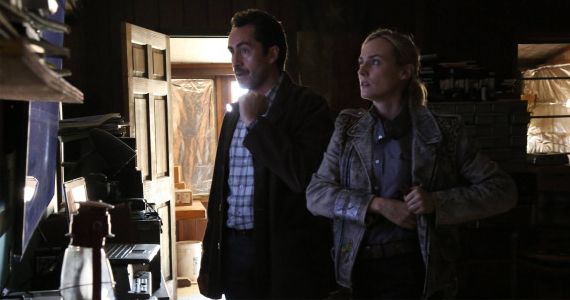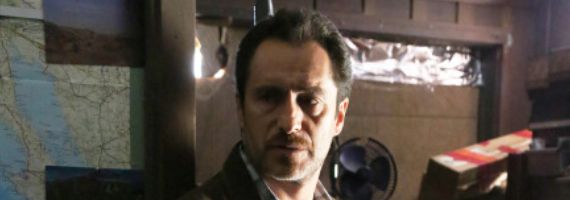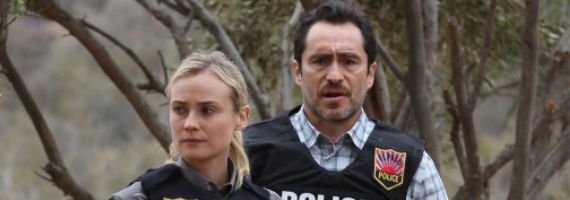Typically, it's a sign that a show is doing something interesting when it manages to surprise you, take you to places you didn't expect to go, or even show you things you're downright certain you didn't want to see or think about. And in 'Destino,' an episode of The Bridge that is downright hyperactive in comparison to the more sedate offerings thus far, demonstrates the series' penchant for managing all of the above.
However, the trick of the episode is to string together several extreme moments with some out-of-left-field suggestion and graphic imagery so that it borders on excessive and makes plenty of room for misdirection near the end. In fact, so much of 'Destino' exists in the extremes of what is the already heightened reality of The Bridge - and its unique take on its world and the characters in it - the smaller character moments of Alma, Sonya and Cooper wind up being the actual connective tissue on which the next chapter may wind up being told.
With all of the graphic violence, language and…um, backseat encounters going on, characters like Marco, Hank and – although he's currently uninvolved in the Bridge Butcher storyline – Tampa gunrunner/smooth-talker Ray are seeing too much forest, and therefore can't discern any one particular tree, so to speak. In a sense, that's the underlying message of the killer: He demands that the world's gaze be forcefully fixed on what he considers to be his message, and to broadcast the societal inequities he finds most egregious.
While everyone is focused and consumed by the big picture, Sonya, like Marco says, is too engrossed in the details; the minutia others might miss due to being so preoccupied with things like their personal life, or otherwise consumed with guessing the Bridge Butcher's next move.
Marco tells his partner to learn to listen to her gut, and her gut tells her to scrutinize the details until something – anything – reveals itself to be even the slightest bit useful. In the end, it's Sonya's obsessive attention to detail that brings her things like a partial vin number on a faux police cruiser, or the idea that a gunman and suspect no. 1, Jack Childress, might actually answer his phone while he has four detectives pinned down in a hot, dusty trailer park.
Additionally, unlikely as it was to nearly everyone – especially Marco Ruiz, who could barely be bothered to listen – Deputy Manny Stokes was all but certain he'd involuntarily sifted through the collective big picture and discovered a strange, minute detail, resulting in a profound (to him anyway) theory that likely hadn't occurred to anyone up until that point. It was a big moment for an otherwise simple guy and the shine of excitement on his face eclipsed even his newly straightened teeth – right up until Marco wound up wearing Manny's face like some garish Halloween mask.
Much of this has to do with coincidence – something this series actually relies on perhaps more than it should – but for the most part, The Bridge typically justifies that reliance on happenstance, luck or a simple twist of fate (Childress admits he was aiming for Marco) by making those instances lead the characters down a path that winds up meaning something for their personal arcs as well as the narrative.
Sonya happens to have inadvertently blown up Marco's marriage as a result of how she processes and disseminates information, but that instance of using Sonya as a plot device has afforded a greater understanding of Marco, Alma and how they communicate. Marco pleads with his wife to take him back, and then later refers to his domestic situation by telling Hank, "It is what it is." Meanwhile, Alma acquiesces to her co-worker's less-than-subtle crush on her as a means to communicate her own feelings on the topic of her marriage.
What it all means in the larger sense of the story, or what the series itself is trying to say about its subjects – particularly the geographic and cultural aspect of it all – is sometimes cluttered, but it certainly suggests how information is filtered through coded messages, spoken and unspoken words, and written and unwritten rules that have themselves muddied up the process of communication.
But it's also hard to discredit the way the series examines the willful ignorance of those afforded the option not to look, listen and perceive what's happening around them, and how it takes extremes in order to earn the public's attention, let alone hold their collective gaze. So far it's not a perfect message, but it is one well worth a listen.
_____
The Bridge continues next Wednesday with 'Vendetta' @10pm on FX.



